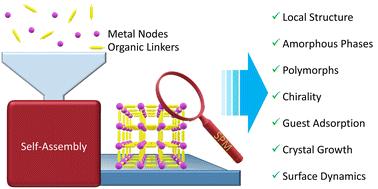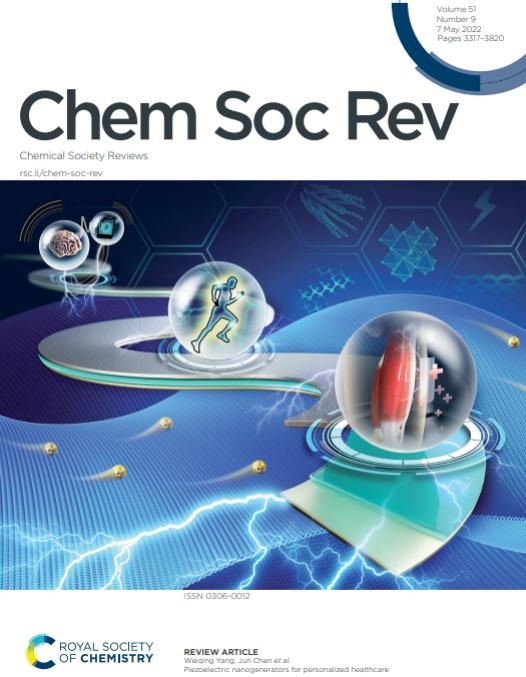金属-有机配位系统的扫描探针显微镜:单层,单晶,离散结构的表征
IF 39
1区 化学
Q1 CHEMISTRY, MULTIDISCIPLINARY
引用次数: 0
摘要
金属-有机配位在许多功能材料中普遍存在。这样的系统在其组成、复杂性和维度方面是高度多样化的。它们包括二维(2D)和三维(3D)结构,从物理吸附在固体表面的单层金属有机配位网络(mocn)到结晶金属有机框架(MOFs),再到离散金属超分子结构(dmsa)。这些金属有机材料在各种各样的应用中已经得到证明,显示出将它们纳入新兴技术的希望。已经开发了几种设计策略,用于制造具有多种结构的mmocn, mof和dmsa,从而能够精确控制其功能特性。由于这些策略都是在分子水平上设计的,因此人们对金属-有机配位系统在不同长度尺度上的纳米级分辨率成像非常感兴趣。本文综述了利用扫描探针显微镜(SPM)表征金属有机配位体系纳米尺度的最新进展。讨论了从表面受限的MOCN单层到MOF薄膜、MOF单晶表面和DMSAs的系统。具体来说,我们讨论了扫描隧道显微镜(STM)、原子力显微镜(AFM)以及将扫描隧道显微镜与光谱方法相结合以获得高分辨率化学信息的技术对多核金属有机组件纳米级结构表征的贡献。本文章由计算机程序翻译,如有差异,请以英文原文为准。

Scanning probe microscopy of metal–organic coordination systems: characterization of monolayers, single crystals, discrete architectures
Metal–organic coordination is omnipresent in a number of functional materials. Such systems are highly diverse in terms of their composition, complexity, and dimensionality. They include two-dimensional (2D) and three-dimensional (3D) structures ranging from monolayers of metal–organic coordination networks (MOCNs) physisorbed on solid surfaces, to crystalline metal–organic frameworks (MOFs), to discrete metallosupramolecular architectures (DMSAs). The use of these metal–organic materials in a wide variety of applications has been demonstrated, showing promise for their incorporation into emerging technologies. Several design strategies have been developed for the fabrication of MOCNs, MOFs, and DMSAs exhibiting a diverse array of structures, enabling precise control over their functional properties. As these strategies are designed at the molecular level, there has been considerable interest in the nanoscale resolution imaging of metal–organic coordination systems across different length scales. This review provides a glimpse of recent progress in the nanoscale characterization of metal–organic coordination systems using scanning probe microscopy (SPM). Systems ranging from surface-confined MOCN monolayers, to MOF thin films, surfaces of MOF single crystals, and DMSAs are discussed. Specifically, we discuss the contribution of scanning tunneling microscopy (STM), atomic force microscopy (AFM), and techniques that combine SPM with spectroscopic methods to obtain high-resolution chemical information, toward the nanoscale structural characterization of multinuclear metal–organic assemblies.
求助全文
通过发布文献求助,成功后即可免费获取论文全文。
去求助
来源期刊

Chemical Society Reviews
化学-化学综合
CiteScore
80.80
自引率
1.10%
发文量
345
审稿时长
6.0 months
期刊介绍:
Chemical Society Reviews is published by: Royal Society of Chemistry.
Focus: Review articles on topics of current interest in chemistry;
Predecessors: Quarterly Reviews, Chemical Society (1947–1971);
Current title: Since 1971;
Impact factor: 60.615 (2021);
Themed issues: Occasional themed issues on new and emerging areas of research in the chemical sciences
 求助内容:
求助内容: 应助结果提醒方式:
应助结果提醒方式:


